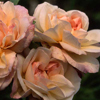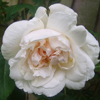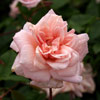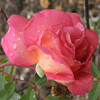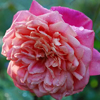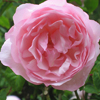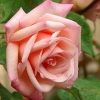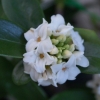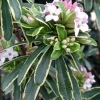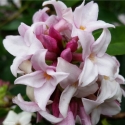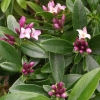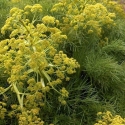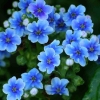During the years I have been in horticulture I spent some time working for a very clever man who bred polyanthas and bearded cyclamen. I watched the passion and the nature of the tedious work that he did breeding these plants into differing series of colours.
The process of creating a new cultivar takes much patience, tedious work and precise record keeping. It involves the removal of the male stamens so that the flower can't self pollinate, the swapping of pollen from the male anthers of desirable blooms to various appropriate female stigmas.
Then the wait begins for the resulting seeds to grow, mature and ripen. Next is obviously to grow the progeny seeds to seedlings, then to a flowering point so that you can see the result of your carefully researched crosses. Finally trial the performance of your new hybridised plant. In the case of a plant like Polyanthas which is a perennial the life cycle is quite quick relative to many other plants. Even though you probably only get one cycle per year these herbaceous plants will come to flowering quite quickly and so are quick to show your results.
In the case of breeding roses I imagine that the principles are the same by selecting desirable parents and brushing the desirable pollen onto the female stigma and eliminating self and rogue pollination. The life cycle would be much longer than that of Polyanthas so it would be time to grow the hips that contain the seeds. Then those seeds have to be sown and grown to a flowering stage.
Once you have a viable flowering plant then still to be done is a selection process to choose the best overall flower and bush. Once a suitable candidate has been chosen then its grown and trialled for health, free flowering and being a suitable rose in todays generation.
Now roses have been bred since time began as all the generations seem to have had a fascination with creating that perfect bloom and then naming them either after themselves or some one famous of their generation.
It's entirely possible (if not a little romantic) as the Chinese have cultivated Roses from about 3000 BC. Confucius (551 - 479BC) recorded that a large number of roses had been planted in the Imperial Gardens in Peking and roses are certainly depicted in Chinese art from the 10th century onwards.
Early 1800, 1814
Noisette Roses were bred by John Champney and Phillipe Noisette in Charleston, South Carolina. John Champney crossed 'Old Blush' with 'Rosa Moschata', a 1540 species rose from the Himalayas, resulting in 'Champneys Pink Cluster' which I guess he named after his family name.
1810
Tea roses, or tea-scented
China roses, as they were first called, appeared in London about 1810, from a cross between Rosa gigantea and Rosa chinensis. They were called tea-scented because their fragrance seemed reminiscent of a newly-opened chest of tea. (In those days, tea was shipped from the Orient and sold to English households in small wooden chests.) Famous tea roses include
Archiduc Joseph,
General Gallieni.
Duchesse de Brabant and
Jean Ducher and these would all have to be in my favourite of roses.
I will continue of the rose story next week.
Just arrived and we have been waiting for
Everyone's favourite and rightly so as the pretty flowers and gorgeous fragrance is just stunning. Daphne is quite a difficult crop for growers to produce well but we have just put our years supply into stock. Unfortunately some plants are only available for us to purchase once a year and now is the time that Daphne makes it debut.... probably just in time for those delightful flowers. Now Daphne can be a tad tricky to grow but get all its quirks right then you should be picking those flowers to bring inside for years to come. Give it a position where it gets the morning sun but not the afternoon sun, in other words good quality light but not the harsh baking sun. Next on its list of likes is well rotted, composted soils that are not wet but moist. You know what I mean, that lovely dark soil. Don't put Daphne under the eaves where it gets no natural rainfall.. in fact those positions are the worst for any plant as under the eaves can be unnaturally dry.
For the plant buffs and leaf lovers....... some special ones from the Chathams
Chatham island forget me not or
Myosotidium hortensia.. these have the coolest leaves... if you have even a bit of a leaf fetish then this could be your new plant for the garden. Large round cool green and ribbed, complete the picture with gorgeous true blue flowers. There are a few trick to growing this one but get it right and it will wow you with those flowers. In the Chathams it grows on the ocean facing rock cliffs where it must get full sun and coastal winds and spray. Emulate this in your garden by planting where it gets high light but protection from the afternoon heat and drainage has to be sharp so no wet feet. I have even heard of some bringing salt water home especially for there Chatham Island Forget Me Not.
Aciphylla diffenbachia... or Speargrass is another treat also from the Chathams and this one also has gorgeous finely dissected foliage in greyish blue green ... another plant for those that love leaves. I used to have this plant in my garden and think maybe its time to have it again as I do love leaves and this one is very attractive. This Aciphylla belongs to the family of umbelliferacae or we should use its new Apiaceae, which mean that its flowers are borne on long tall stem and are umbel shaped like flowers on Parsley and carrots. This last fact I didn't know but apparently the cut leaves last for ages in the vase for those that are keen on floral work.
Conifers
Such hardy plants that are quite tolerant of cold, heat and dryish soil conditions.. its to do with their leaves or rather needles or flatten leaflets that are expert at conserving moisture loss. The conifer family is huge and they range from true dwarfs to those that will grow into quite large trees and so will suit a variety of positions in the ornamental garden. To that end Ang has organised a new range of these to add to our existing Thujas, Junipers and cupressus. They will be in stock shortly so watch the website
Just Arrived page for them.
Our
Waikato Rose Society sessions last weekend were hugely sucessfull with a large turn out so if you didnt or could make it then then there are three more left coming up. Pick those Rosairan brains for choice of roses, pruning, feeding and or spraying then get yourself to one of our last thee session. the next one being
These events will be held on the following weekends, rain or shine at the times given. Please register your intention to attend by response to this newsletter or if you are a
facebook user events have been posted for each date, you can click
here to choose the event you would like to attend or the dated links below.
Its no biggie if you haven't registered or emailed us ... just come along and ask the questions
the last ones that we will be holding are a couple of weeks away being
Sat 15 July 1.00pm-3.00pmWin Win Win
If you attend any of the 5 planned events make sure you sign the guest sheet so you go in the draw to WIN a BUSH or CLIMBING ROSE valued at $29.99 of your choice. Winner will be contacted after the last event.
These weekends come around too quickly for my liking, no sooner have we finished one and the next one is looming. Now that all the leaves have fallen we are doing that last tidy up in the garden and are slowly starting on our pruning of the fruit trees and roses. Its still early but if we don't get started we will run out of time as the next lot of trees are due in next week for potting.
I have my fingers crossed for a fine weekend but according to Harry its meant to be wet again.
Have an awesome weekend
Lloyd, Harry and the Wairere Team
Make it a Wairere weekend where even GNOMES know that gardening's not a drag.
